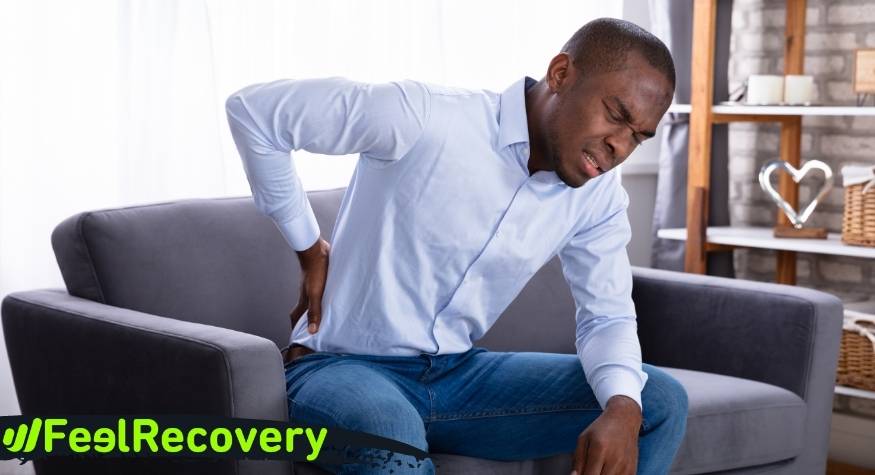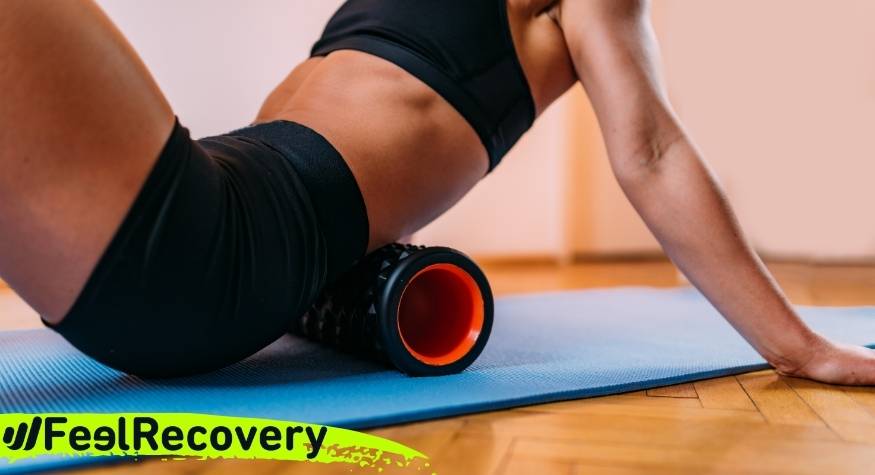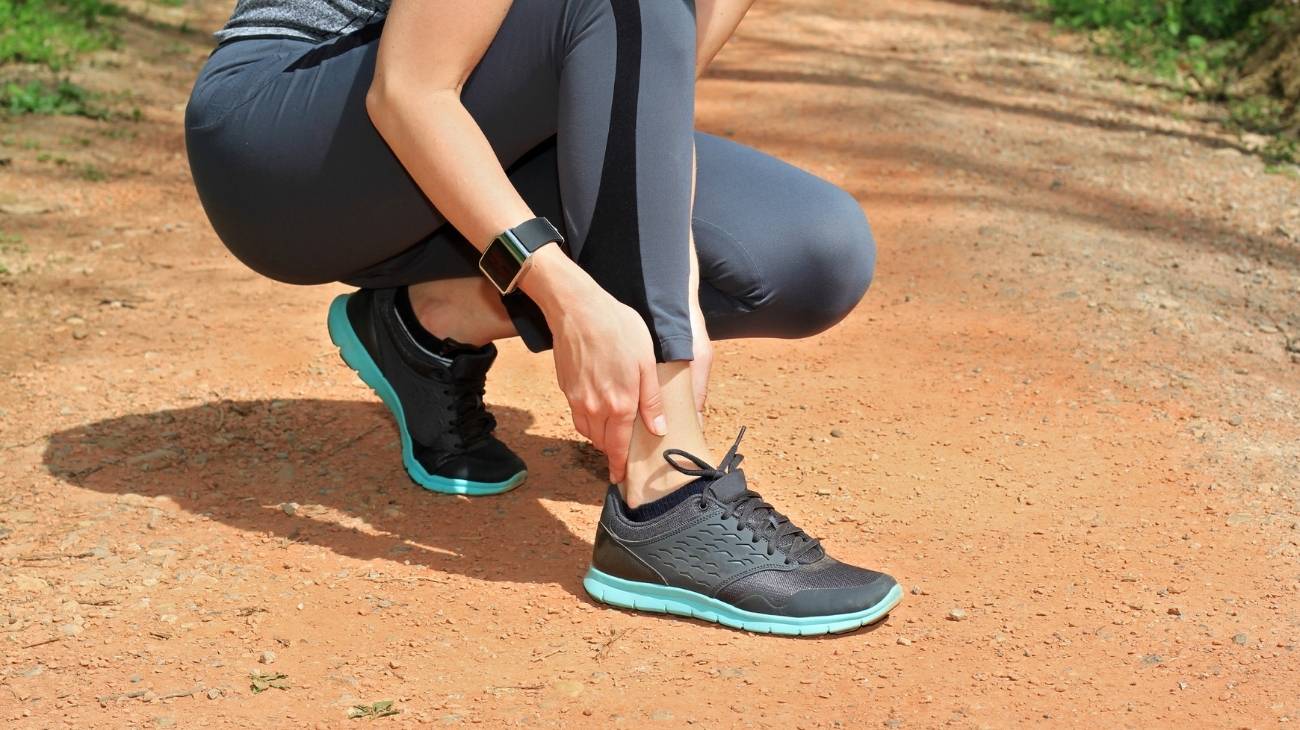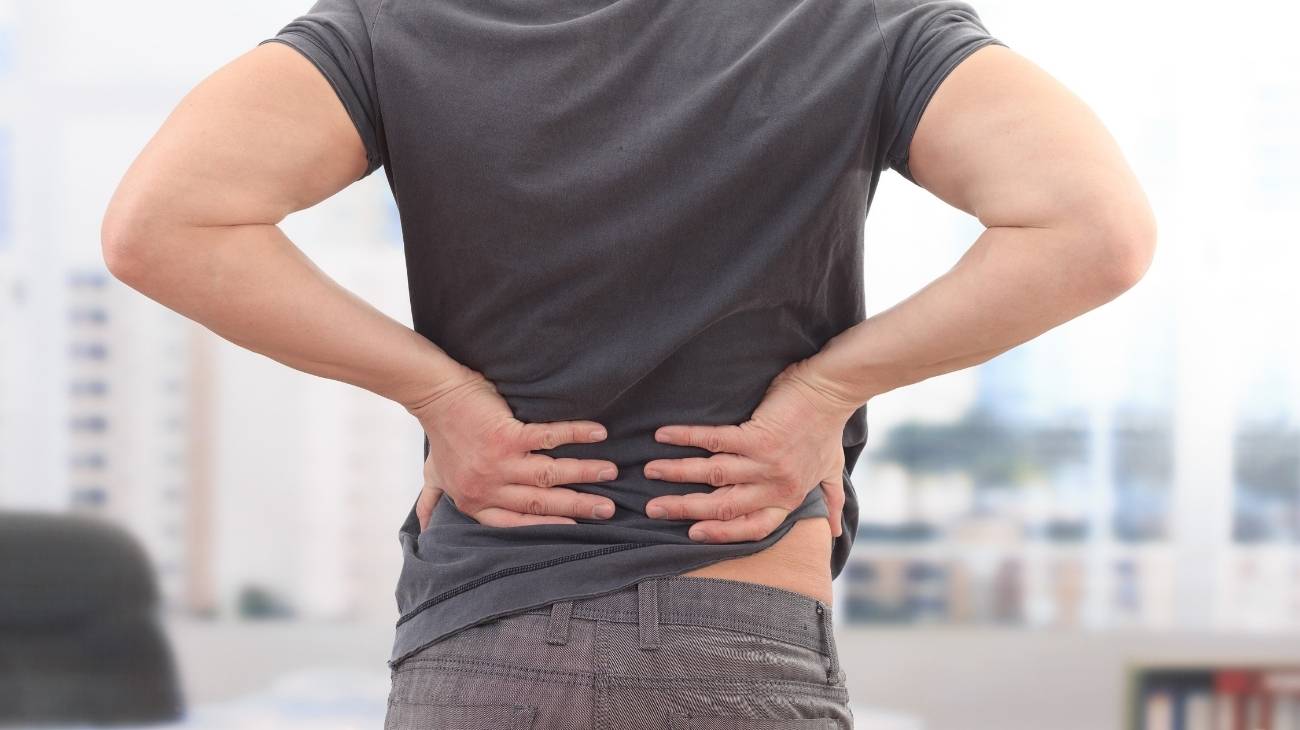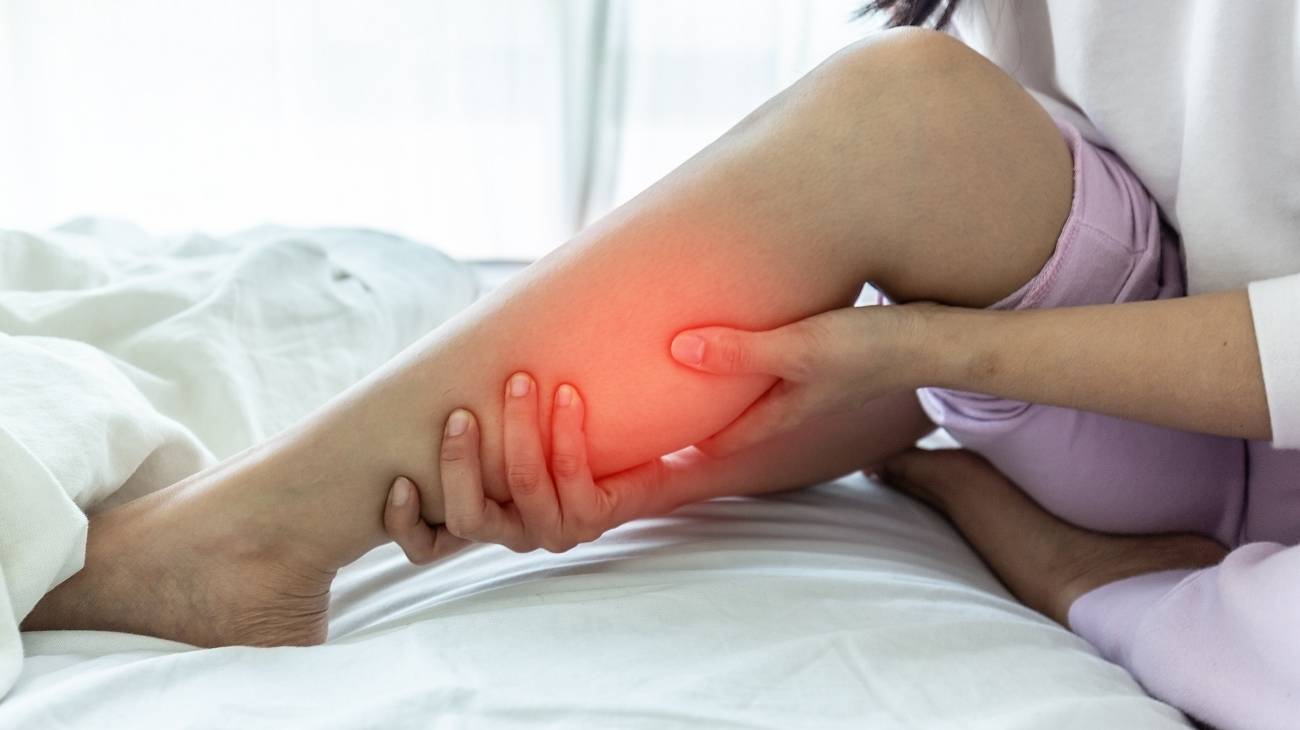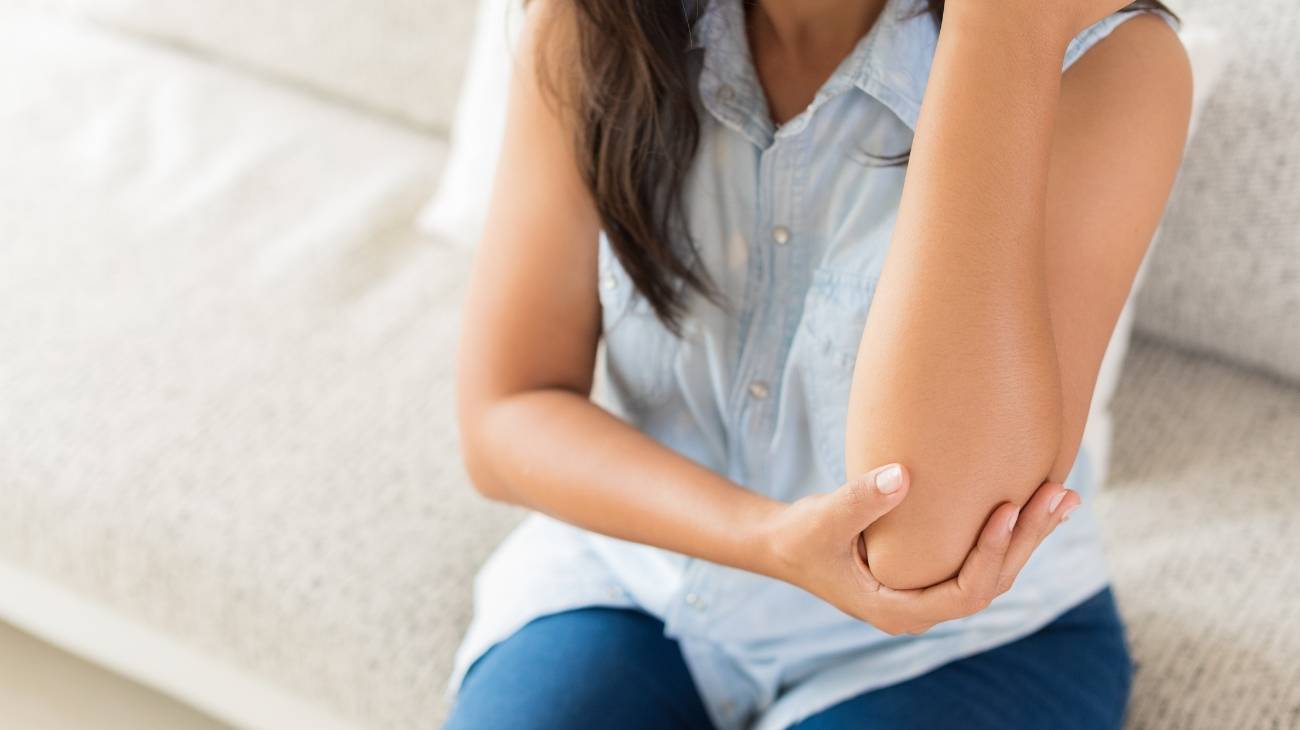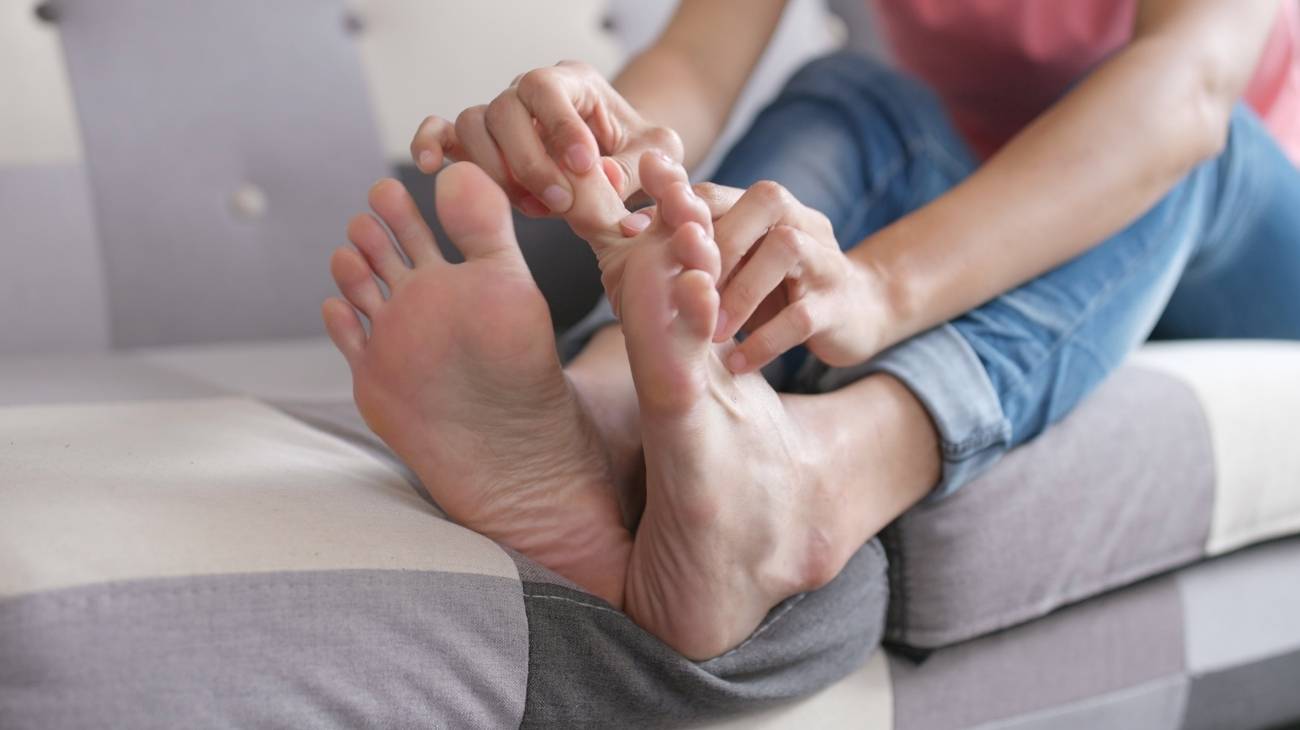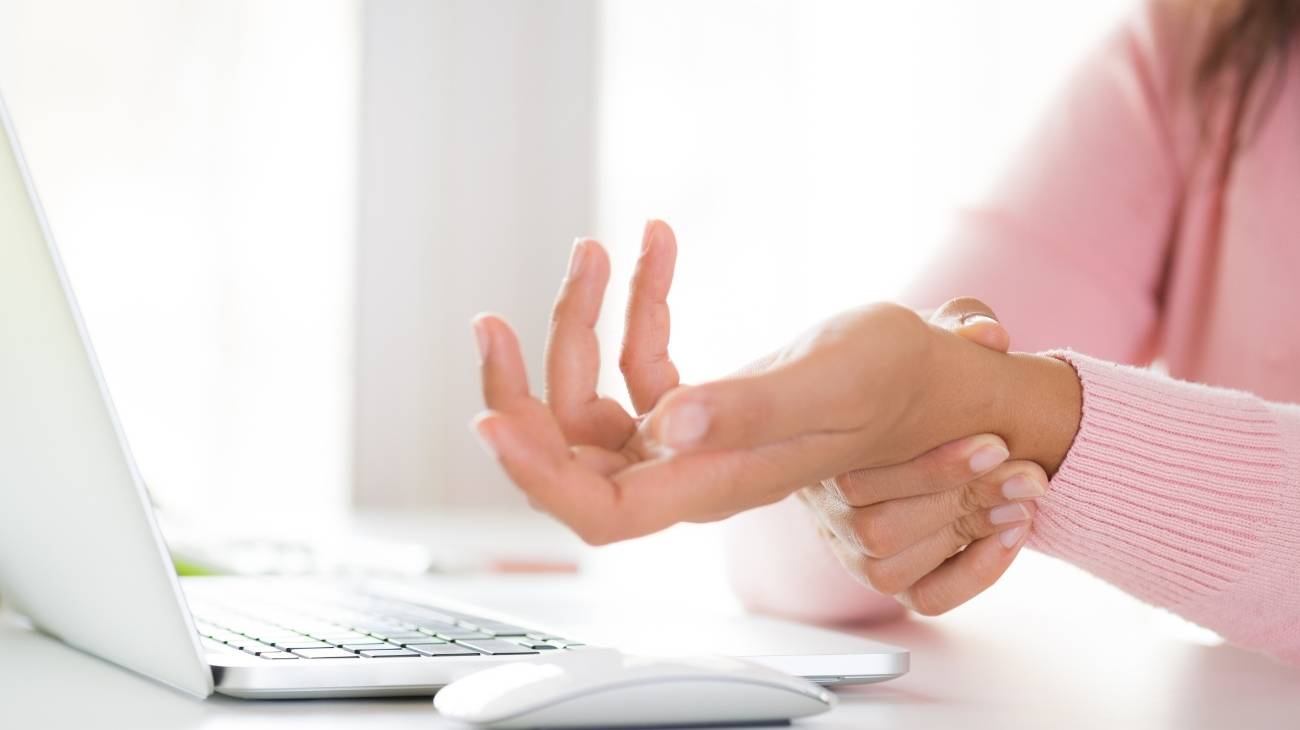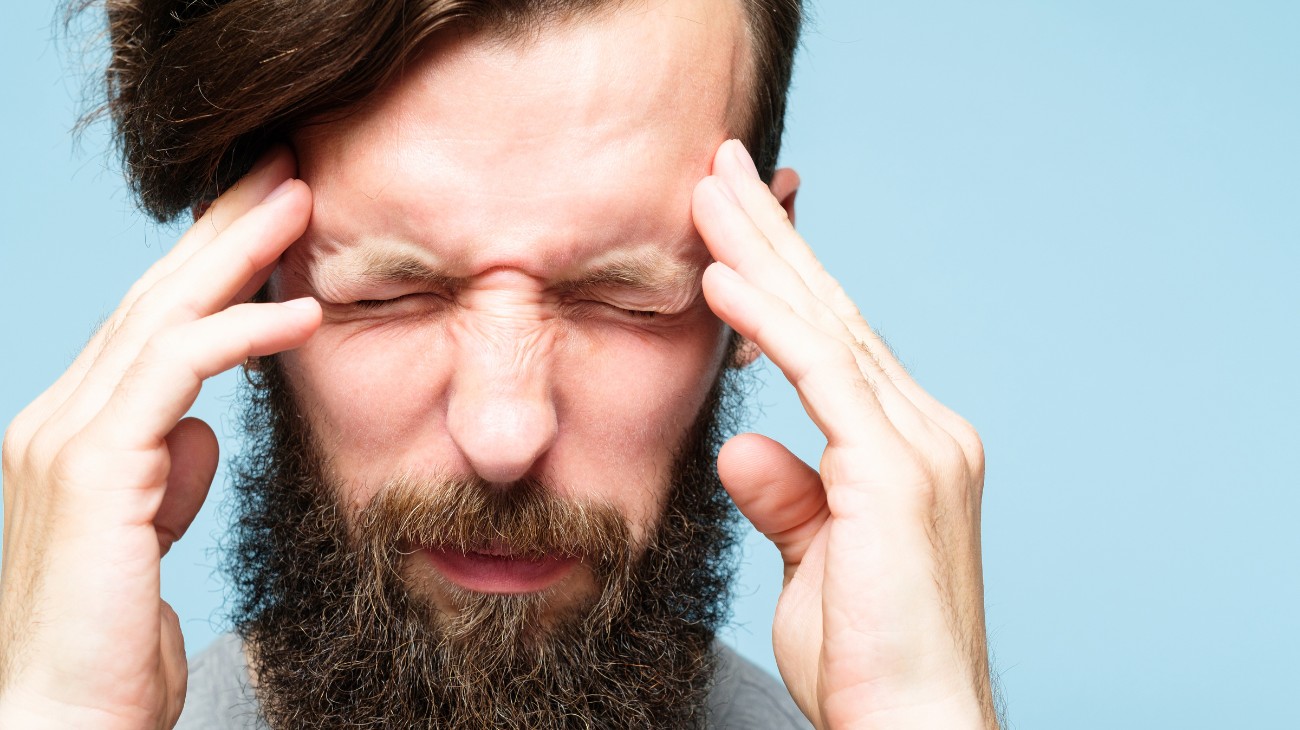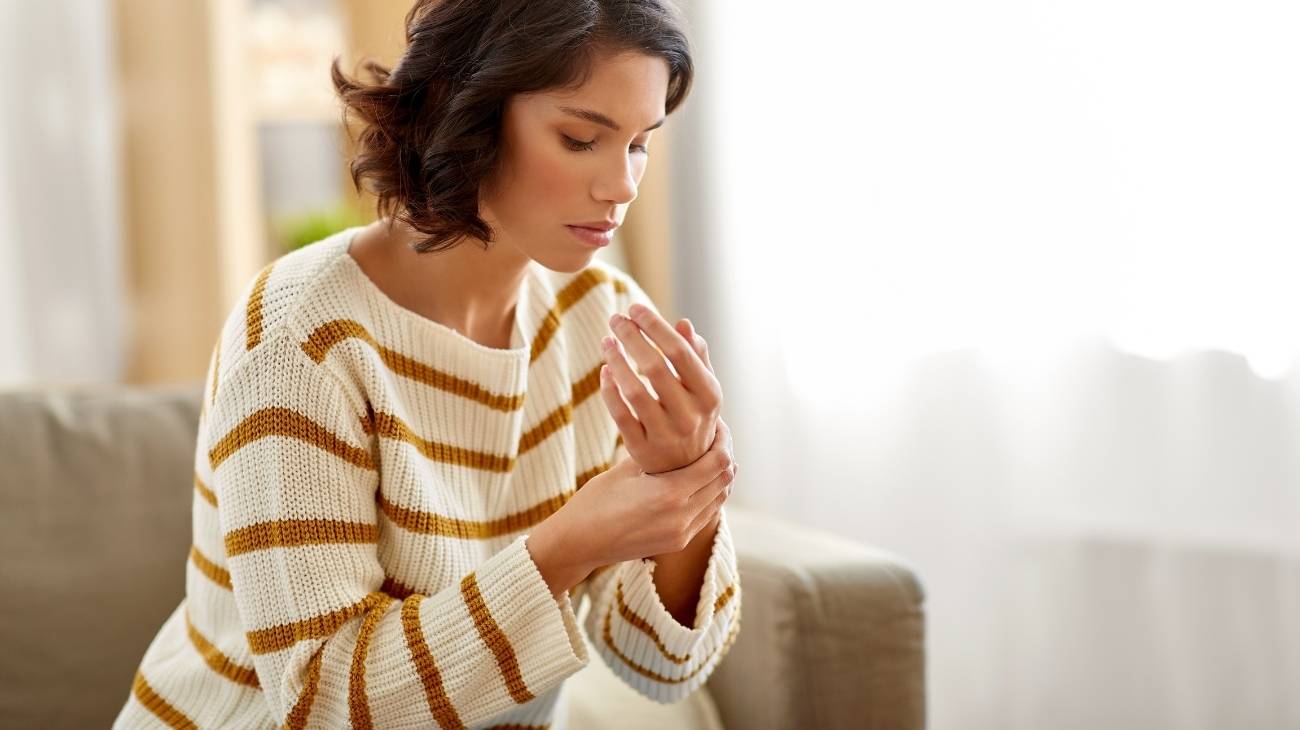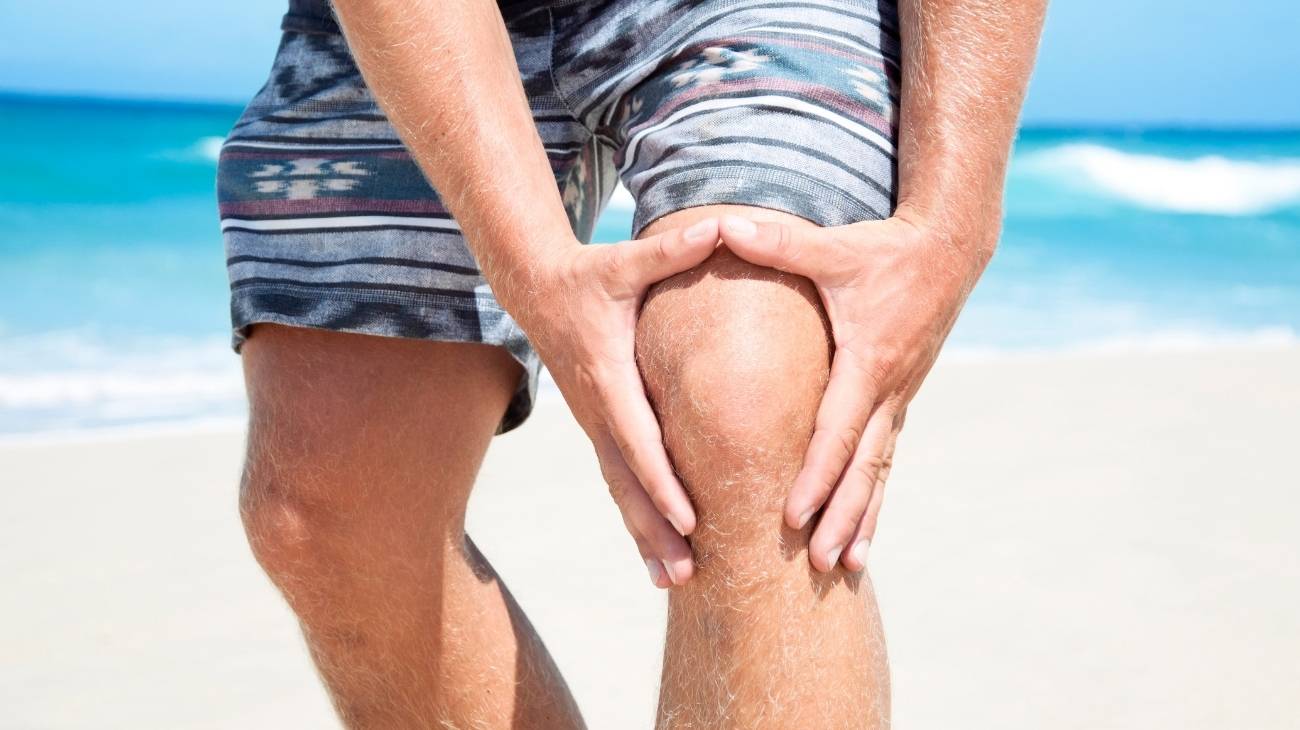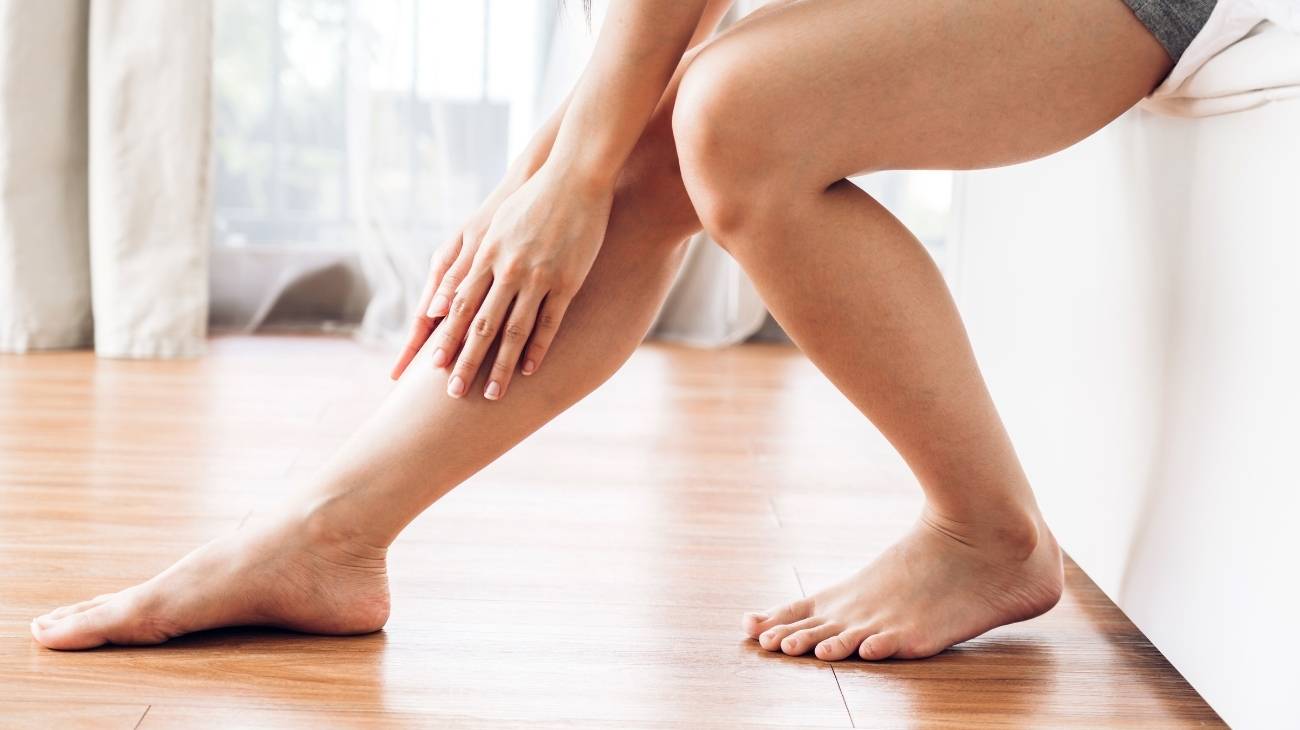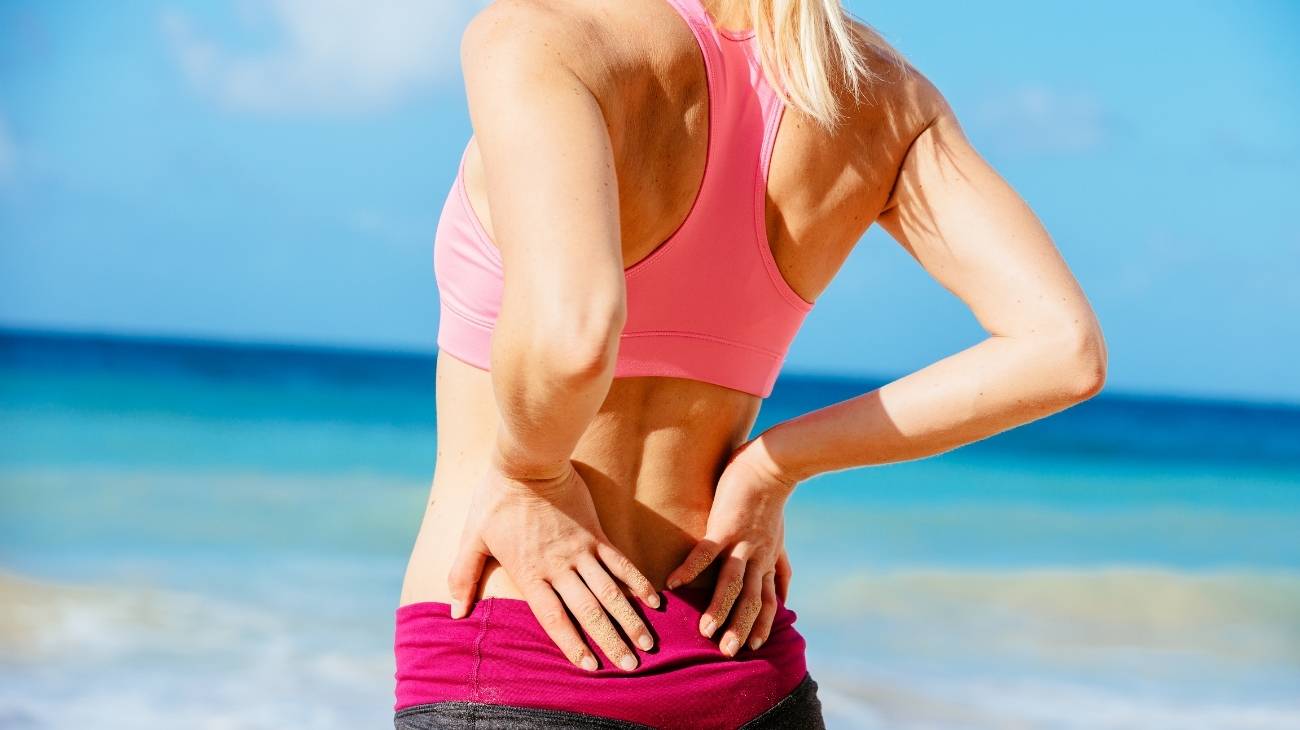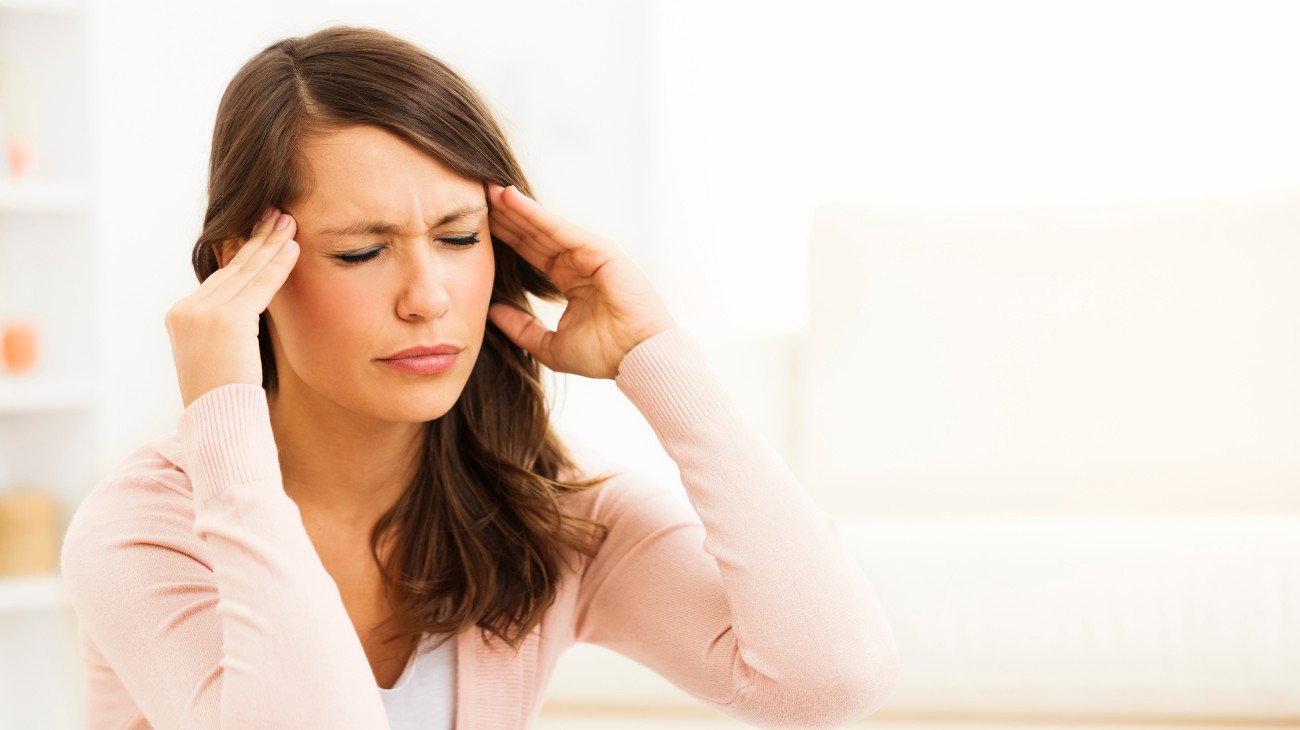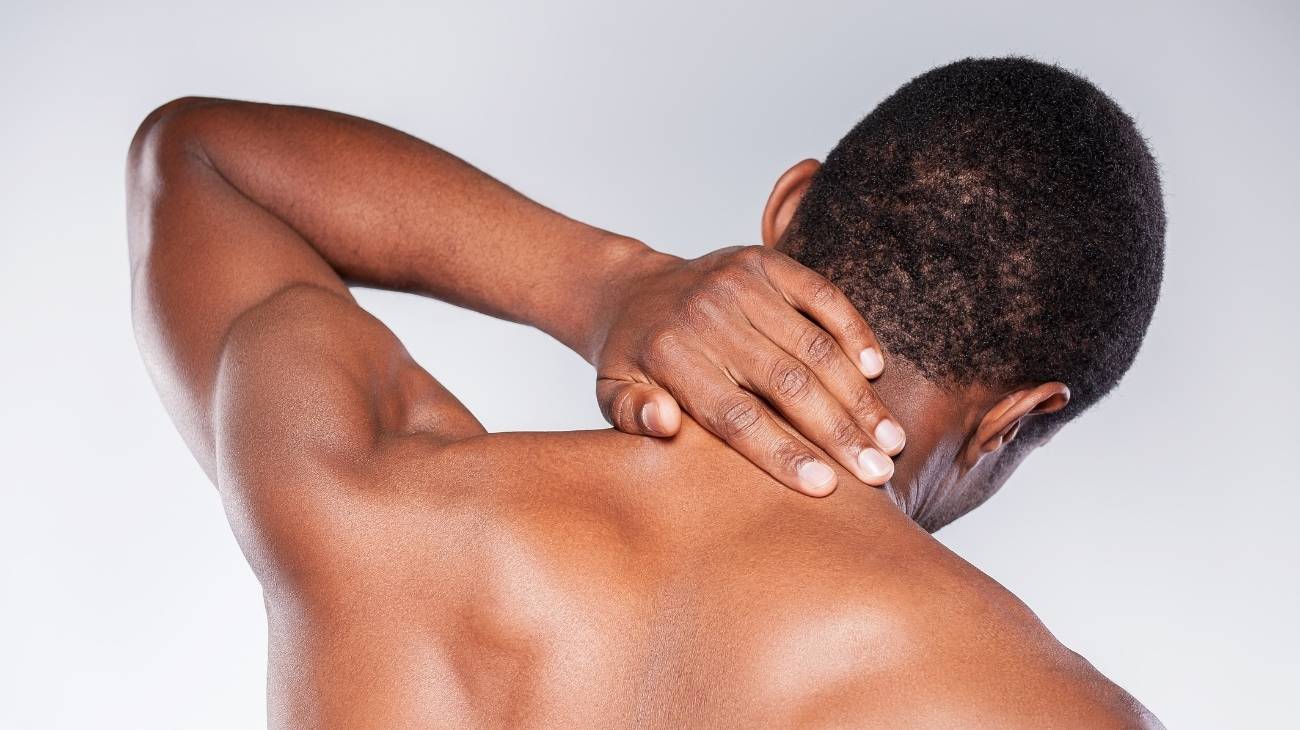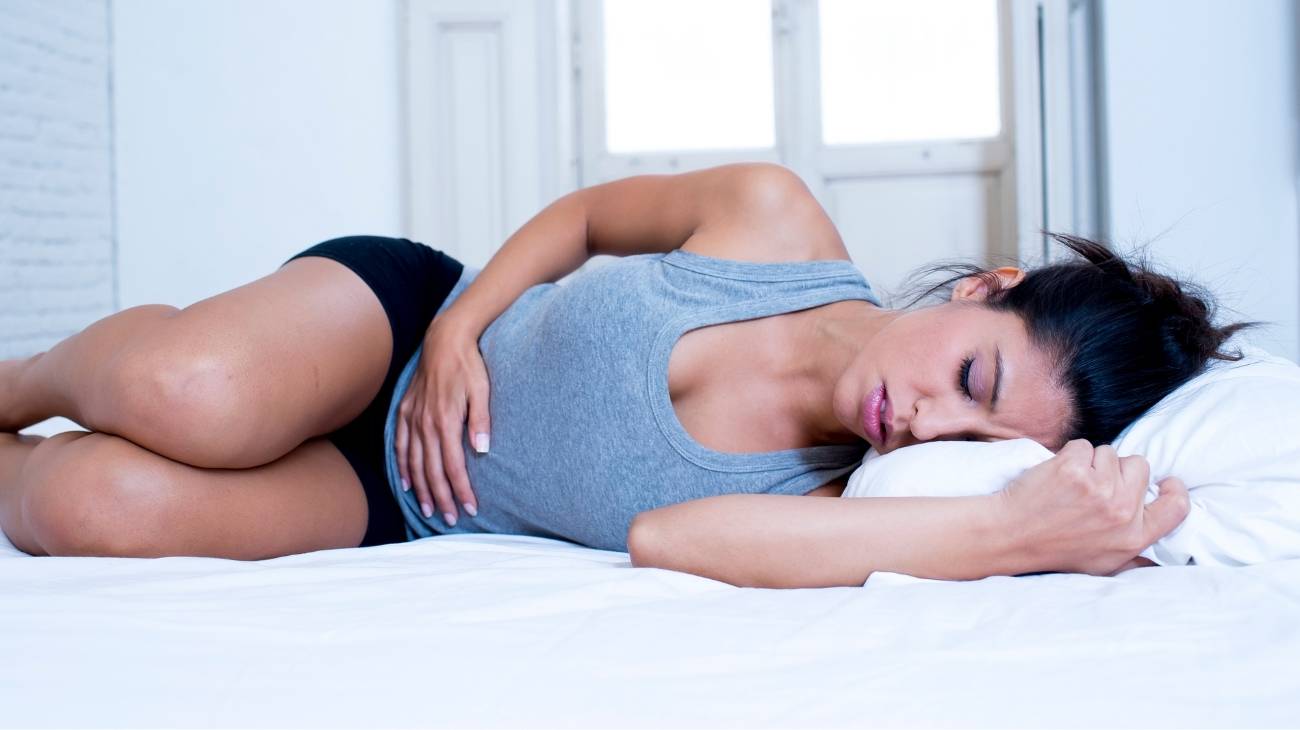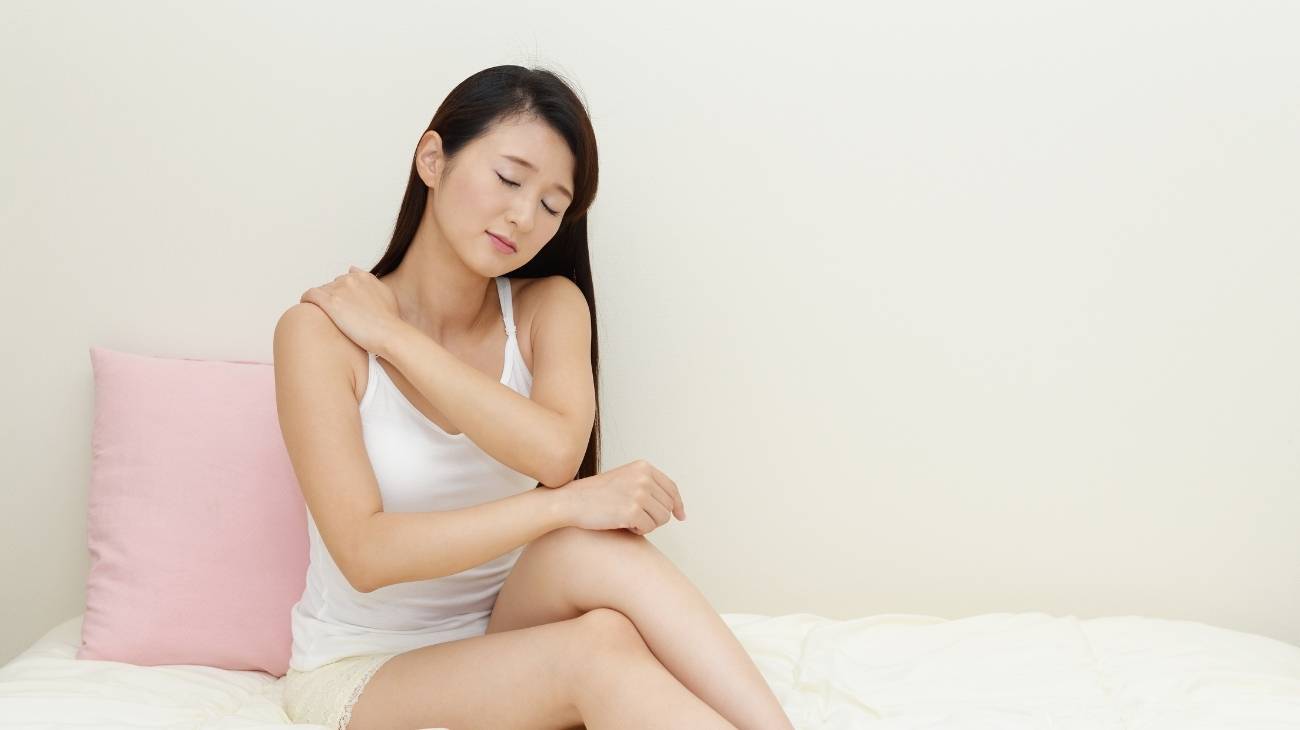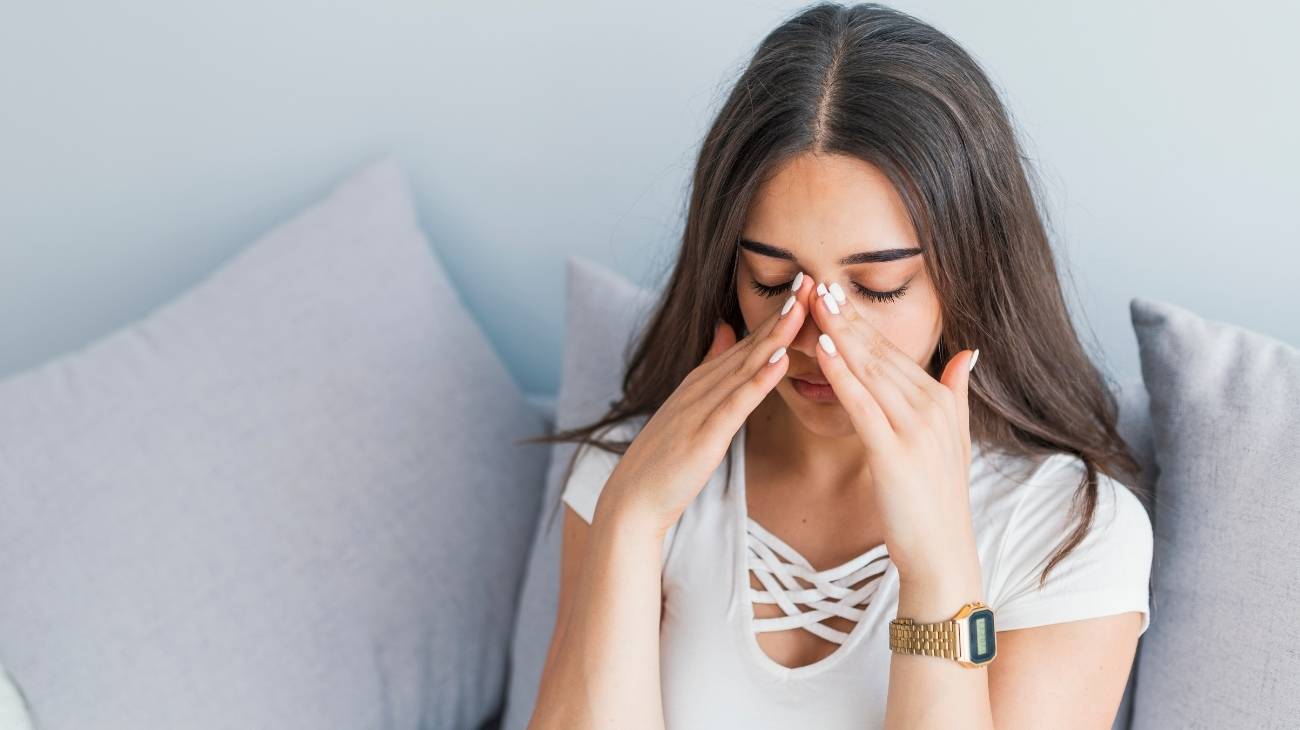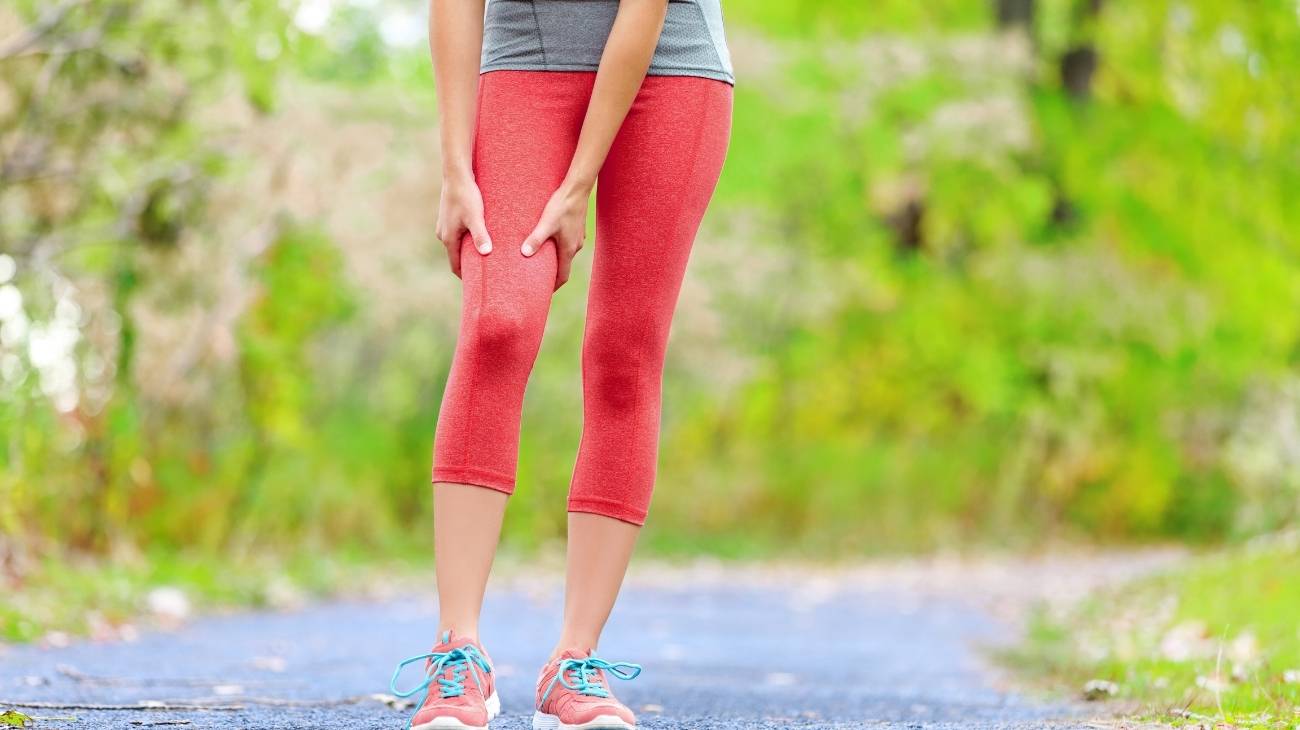- What is back pain and how to identify it?
- Best products to relieve lower back pain
- What causes back pain and what are the causes that originate it?
- What types of diseases can cause back pain?
- What are the symptoms and types of pain that make us think we have an injury in the back and dorsal area?
- How can we relieve back pain through complementary and non-invasive therapies?
- How to apply the RICE therapy step by step to reduce back pain?
- How to prevent future back and hip pain?
- How to differentiate back pain with pain in the chest, ribs and lungs?
- Why should we avoid pills and injections to relieve lower or upper back pain?
Managing to reduce back pain is essential to be able to lead a normal day to day life. The back is a large and complex body area, which means that we can hurt ourselves in many different ways.
You will learn the causes of back pain as well as the symptoms that accompany it in each case, so that you can find out what your problem is. Of course, we give you guidelines for recovery when the area hurts, we recommend the best non-invasive therapies and we help you to prevent back pain by offering you the best preventive advice.
What is back pain and how to identify it?
Back pain is a discomfort of very variable type and intensity that involves a number of symptoms. It can be the cause of injuries but also of illnesses and other pathologies and, at the same time, can also cause damage in other areas.
In fact, although there are all kinds of causes, back pain is considered one of the pathologies without a specific cause because it very commonly appears as a result of an unknown neurological mechanism involving pain, muscle contraction and inflammation. This is its most basic form, the one most often suffered and the one that, to this day, is still being studied.
For its simple identification, the most correct thing to do is to determine which area of the back hurts. This is important because many of the problems that cause pain only affect one part of the back, either the upper back or the lumbar area, which would help us to speed up the diagnosis.
Low back pain (lumbago or lumbar pain)
It is a fairly intense discomfort that affects the lumbar vertebrae (L1-L5), the sacrum (S1) and coccyx (S2), on the sides (behind the kidneys) and often, because of its cause, the pain radiates down to the feet. The lower back also hurts if we suffer muscle spasms or tears as well as different degenerative diseases. Usually there is a previous trauma or injury.
Upper back pain (cervical pain)
It is closely related to cervical pain and shoulder problems, although, of course, it also appears due to bad posture, forced positions, stress, weakness that causes irritation of the muscles, and pathologies that affect the back in general.
Middle back pain (dorsal pain)
It appears due to more generalized problems, the damage is usually less severe and the pain is more diffuse, covering a large area and is not incisive. Lack of postural hygiene and overexertion are the usual origin of this damage.
Best products to relieve lower back pain
Bestseller
-
Microwave Wheat Bag for Back Pain Relief (Extra Large) (Hearts)
£24,95 -
Microwave Wheat Bag for Back Pain Relief (Extra Large) (Oxford)
£24,95 -
Microwave Wheat Bag for Back Pain Relief (Extra Large) (Sport)
£24,95 -
Microwave Wheat Bag for Neck & Shoulder Pain Relief (Hearts)
£24,95 -
Microwave Wheat Bag for Neck & Shoulder Pain Relief (Oxford)
£24,95 -
Microwave Wheat Bag for Neck & Shoulder Pain Relief (Sport)
£24,95 -
Microwaveable Wheat Bag for Pain Relief (Hearts)
£20,95 -
Microwaveable Wheat Bag for Pain Relief (Oxford)
£20,95 -
Microwaveable Wheat Bag for Pain Relief (Sport)
£20,95 -
Wheat Bag for Microwave Classic Bottle Shaped (Hearts)
£20,95 -
Wheat Bag for Microwave Classic Bottle Shaped (Oxford)
£20,95 -
Wheat Bag for Microwave Classic Bottle Shaped (Sport)
£20,95
-
Back Support Belt (Black)
£39,95 -
Back Support Belt (Green)
£39,95 -
Back Support Belt (Pink)
£39,95 -
Ice Massage Roller Ball (Black)
£34,95 -
Ice Massage Roller Ball (Green)
£34,95 -
Ice Massage Roller Ball (Pink)
£34,95 -
Sacroiliac Support Belt (Black)
£24,95 -
Sacroiliac Support Belt (Green)
£24,95 -
Sacroiliac Support Belt (Pink)
£24,95 -
Soft Density Foam Roller for Recovery (Black)
£34,95 -
Soft Density Foam Roller for Recovery (Green)
£34,95 -
Soft Density Foam Roller for Recovery (Pink)
£34,95
What causes back pain and what are the causes that originate it?
Of the many circumstances that we experience in our daily routine, there are some activities that can directly affect our back and make it hurt.
Bad posture
Maintaining a bad posture for a long time will cause our back to hurt. It happens both at the bone and muscle level, by forcing both bones and muscles to be extended or retracted unnaturally. The worse our physical shape is, the easier it is to damage our back and the more intense the pain will be.
Pregnancy
Pregnancy can cause back pain for various reasons:
- As the baby gains weight, we have a greater burden and this is maintained 24 hours a day. Try, therefore, not to gain more weight than necessary.
- As the baby grows, it squeezes the organs. This includes the nerves, which can change the axis of our spine and, of course, cause pain in the different parts of the body that these nerves pass through.
- Other effects of pregnancy are tired legs, and the large abdominal volume makes us move differently.
- In general, we feel weaker, so that any activity tires us sooner and ends up being a great effort for the back.
Large breasts
Having a large breast means having an extra load that, in conjunction with gravity, pulls on us continuously, modifying the posture of our back to adapt that extra load. Of course, we cannot forget the weight of the breasts although, certainly, the main problem is postural.
Overweight
Being overweight is a great evil for our organism at all levels. However, it wreaks havoc mainly on the bones by relentlessly loading them. This means that, as in the case of pregnancy, we carry an extra load 24 hours a day, with no possibility of rest. On the other hand, it is worth mentioning that lipid tissue degenerates the intervertebral discs causing lesions, while at the same time secreting polypeptides that provoke cytokines, systemic inflammators par excellence.
Intense efforts
When we work too hard, no matter with which part of the body, the area suffers. If we add weight, incorrect posture, continuous repetition and no rest, we have the perfect circumstances for our tissues to suffer without the ability to regenerate, which ends in problems such as muscle strains or tears in the back.
Stress or anxiety
These mental situations physically affect our organism. Pain is somatized and we take it to especially vulnerable areas, as is the case of the back. In addition, this type of disorder not only produces damage but also favors and enhances it, and can make it chronic, causing us to suffer back pain for life. We can add to the psychosomatic damage the fact that, when we are stressed, we unconsciously tense our muscles.
Due to gas
When we have gas and are unable to expel it, it causes abdominal pain by accumulation and extension of this area. The pain that occurs can radiate to the back. Do not worry because it is a very easy situation to identify. The pain disappears depending on how long the gases remain retained in the stomach and how much the tissues become inflamed.
Excessive loads
In our day to day life it is very common that we go loaded back and forth. Of course, it is necessary to do it in a proper way, but we do not usually do it. There are specific ways to pick up and carry loads but we usually do it wrong. In addition, we tend to carry more weight than we should, which falls on our back.
What types of diseases can cause back pain?
The pathologies that can cause back pain are countless, since the back is large and complex. However, we will see the most common ones, which are the following:
Sciatica
This is a pathology of nervous origin; the nerves that come out from between the lumbar vertebrae are oppressed or irritated. This usually occurs because the vertebral discs are fractured, because foreign bodies appear that push in the area or even because we have an infection.
A specific pain is produced in the lumbar area and goes down the hip towards the leg and foot, being an electric and very sharp pain, producing almost total incapacitation for routine activity. It is common for the thigh and foot to become numb.
Scoliosis
The spine has an unnatural shape, twisting to one side and creating an S or C shape. If corrective garments and physical therapy do not work, surgery may be performed. Its occurrence may be due to neuromuscular problems, degenerative diseases or inherited.
The back may hurt in a general way or in the lower area, depending on the deformity of the spine. In addition, the lower back fatigues quickly. The hips and shoulders become misaligned as well. Over time, it is possible to suffer from osteoarthritis and other diseases resulting from continued poor movement of the vertebrae.
Hyperlordosis
Similar to the previous one, what happens is that the shape of the spine is correct but much more pronounced, that is, the vertebral deviation occurs forward and backward, not sideways. The symptomatology is identical to that of scoliosis.
Low back pain
Lumbago produces severe pain that appears in the lower back due to multiple causes such as rheumatoid arthritis, herniated discs, fractures, sciatica, spasms, spinal stenosis, etc. Its condition causes us to change our posture, maintaining an abnormal shape of the spine for a long time, which means that our whole back hurts. In addition to the general pain, there is also stiffness, spasms, tingling, difficulty in standing in the correct posture and reduced mobility of the lumbar area.
Fibromyalgia
It is a chronic condition with a number of symptoms. The most characteristic is the acute muscular pain that affects our spine, making our vertebrae ache as well. Muscle stiffness and symptoms in other parts of the body also appear. It is really shocking to know that such a complex syndrome has no cure, although you can improve your quality of life by treating it with physical activity, a good diet, adequate sleep schedule and quality and general physical rehabilitation including osteopathic therapy, kinesthetic therapy and massage.
Herniated discs
Discs are the intervertebral separators that prevent vertebrae from colliding with each other. They have a soft and fragile gelatinous nucleus and an exterior that is hard and rubbery, designed to protect it. When we talk about herniation, we mean that the nucleus is pushed outwards, tearing the outer ring that protects it.
The herniated disc itself already causes pain and runs the risk of infection, but it is also capable of irritating a nerve in the area, causing the nerves to atrophy and send all kinds of erroneous signals to the brain, including pain signals. Weakness in arms and legs and numbness are common depending on the area where the herniation has occurred.
Degenerative diseases
All joints deteriorate over time through simple wear and tear. In the case of the vertebrae, the same thing happens, with wear and tear of the discs that are between them and whose function is cushioning. In addition to a very sharp pain in the back and more subtle pain in the neck, you notice that you lose elasticity and flexibility.
The lower back will also often remain swollen, even reaching the hip. Movements can be unstable, causing the exercise of walking itself to further wear down the discs, multiplying pain and spinal swelling.
Coccydynia
It is the inflammation of the coccyx in its lower part, in the lowest part of the spine. It causes sensitivity in adjacent tendons and ligaments, which makes it inevitable that they hurt with the simple friction between them and with the rest of the surrounding tissue.
It is usually caused by a physical impact such as a blow, an impulse in childbirth or a sudden and very abrupt fracture. But repetitive activity or obesity can also be the cause. The solution will be to divert the pressure to another area, for which coccyx cushions are very suitable.
Fractures of the spine
It is an abnormal compression of the spine due to a huge vertical impact, one of the vertebrae is broken. Occasionally, it can also occur due to osteoporosis. It is a very rare situation but the damage it causes is very serious, even leading to paralysis of the limbs. As you can imagine, the pain is as serious as the situation that causes it.
The pain is felt in the fractured area and in the nearby nerves, which are crushed and pushed. We may also report pain in the neck. In addition, there are intense spasms, tingling and numbness. Further, we find that this problem also causes bladder and bowel dysfunction.
Stenosis
It is the narrowing of the canal where the nerve roots are housed. If this occurs, these are squeezed and crushed, compressing and producing pain along the entire nerve, both in the back and in the area to which it is directed. It usually appears if we suffer from osteoarthritis or if we have developed spurs.
Muscular problems
Tears, tensions, distension, stiffness, wear and tear, there are a great number of muscular problems that affect us every day, simply by performing daily activities, and which produce the most basic back pain. Maintain muscle tone, rest and get used to doing activities at a pace appropriate to your capabilities. Otherwise, you will always suffer from back pain.
Urinary tract infection
If we suffer from an infection and it spreads to the kidneys, we will feel severe pain in them, noticing it in the back, especially in the lower back.
What are the symptoms and types of pain that make us think we have an injury in the back and dorsal area?
When we injure our back, it is usual that, together with the pain that can present itself in different ways, there are other symptoms, the most common of which are listed below:
- Variable pain: The intensity is very variable depending on the type of injury, the affected area, your tone...
- General pain: It occurs with unfocused problems such as bad posture, overweight or many diseases. This is usually mild or moderate.
- Chronic pain: Some pathologies or the worsening of these mean that we suffer from chronic pain, i.e., intermittent, that comes and goes but that will accompany us throughout our lives. This is not acute, but softer and, in general, it is not disabling, and its intensity decreases even more if we rest.
- Shooting pain: Its motivation is usually nervous and we find quite well defined pain points.
- Inflammation: Sometimes, when the problem is of a muscular type, the area may swell a little and we can even discover the shape of the affected tissue.
- Burning: It is also related to damage of the nervous system or even to an incorrect blood flow. In addition, it can occur in the presence of disc injuries.
- Tingling: Either because the origin is nervous or due to lack of mobility (too much rest and the beginning of atrophy), we feel that the skin becomes much more sensitive and even tingling and numb.
- Dysesthesia: Sensitivity is altered, feeling something unpleasant when we are touched.
- Paresthesia: Incorrectly, we feel that our temperature is lower or higher or that we are tingling. This is clearly a nervous problem.
- Muscle weakness: It is usually caused by excessive rest when we feel pain, i.e., as a derivative effect. However, there are also pathologies that cause the muscle tissue to weaken, which implies that we can move more slowly, get tired earlier and cannot do activities as easily as before.
- Difficulty in movement: Both the pain itself and having atrophy or muscle weakness make movement difficult; it exhausts us, incapacitates us and moving is a much greater effort.
How can we relieve back pain through complementary and non-invasive therapies?
If you want to eliminate back pain and you are looking for a natural, non-drug and non-invasive way to achieve this, it is important that you consider the following therapies.
Massage therapy
Without a doubt, massage is the therapy par excellence for relieving back pain. Such a large area can be perfectly manipulated without causing damage. In addition, there are different types of massages, from a simple relaxing massage that will make your muscles stop being stiff to transverse movements to realign the tissues.
There will be many cases in which a massage will not be effective, for example, if you have a herniated disc or sciatica. In cases where soft tissues are involved that are just below the skin and can be manipulated, massage is perfect if you feel pain due to exhaustion, poor posture, excess weight, etc.
Acupressure therapy
Acupressure helps us to reduce back pain by applying gentle pressure on meridian points, which are points that are different from those that really hurt but that you have pressing on them to relieve pain in other areas.
- ST36: It is just below the knee, in the external hollow under the end of the joint (not under the patella), next to the tibia.
- A40: Right in the middle of the depression of the knees or hocks. You may find it easier to find by flexing, as it is right where a crease is created.
- C5: On the inside of the leg, specifically near the posterior border of the tibia and five toes from the prominence of the internal malleolus.
- E12: On the clavicle, at its uppermost edge.
- F1: Press on the depression created between the second and third metatarsals.
- Yuyao (Ex-HN4): Mentally divide your eyebrow into three parts; the point is found at the beginning of the second of them, counting from the inside, generally almost aligned with the pupil.
- B62: This is below the prominent tip of the external malleolus.
- H22: They are located below the spinous process of the lumbar vertebrae, on the sides, at a distance of about two fingers.
- I22: They are in the upper shoulder area, next to the cello, between the spine and the acromion.
Thermotherapy
When you feel a mild or moderate pain that does not appear suddenly but is coming gradually, without too much focus or when the acute process after an injury has ended, put heat on your back. It is very comforting and helps to irrigate all tissues, so that they return to their function more quickly. In addition, oxygen and nutrients are renewed, detoxifying us. The time of use should not exceed 20-25 minutes in each session, and you can use it several times a day without problems.
Cryotherapy
If, on the other hand, the pain you suffer is recent and sudden onset, is well defined and intense, you should apply cold. You will also do it if you have just injured yourself. Be careful because the cold is somewhat more dangerous than heat, so we can not repeat cryotherapy session too many times a day. It is important that the temperature is quite low but that we are not too long exposed to it, it is recommended that each session of cold application does not exceed 15-20 minutes maximum, can be applied 3-4 times daily.
Cold and heat therapy
Depending on the cause, it is very likely that you can also do contrast therapy. This therapy is good in the case of worn and poorly nourished tissues, when they need to be properly nourished because they are in a state of atrophy, as these will be renewed with the application of alternating cold and heat. In addition, this method helps the start-up or return to physical activity. It is also very useful if the problem you have is of a rheumatic type.
Compression therapy
Compression therapy serves to keep the tissues in place and, thus, we have a shorter and better recovery. In addition, with the use of a back support can perform our daily activities safely even if we have some discomfort in the lower back area, as the support will help to strengthen the muscles in this area. The important thing is that the pressure applied is controlled so that it is not counterproductive.
Other effective alternative therapies
- Natural remedies using plants: If you suffer from stress, make an infusion of lavender or lemon balm. If you are looking for a natural pain reliever, opt for ginger, juniper or devil's claw. Other useful plants to infuse are valerian or rosemary.
- Acupuncture: The points seen in acupressure are stimulated but using needles instead of fingers. This means that they must be introduced into our skin at different levels. Even so, do not worry, it is not a painful technique.
- Kinesiotherapy: An expert will evaluate you and will help you to recover quickly by making you perform certain movements. It is possible, depending on how you feel, that the first sessions are passive, that is to say, that he will work for you by positioning your body accordingly and moving it. Little by little, you will be doing more exercises, always related to movement, to restore balance to the back area and, with it, the functionality of its parts.
- Aromatherapy: Take advantage of a good massage to use oils or essences with appropriate aromas and properties. For example, chamomile, basil, eucalyptus or chamomile act as sedatives. Using an oil of this type that penetrates the skin and through the mucous membranes of the nose will help us to relax and feel less pain.
- Osteopathy: It is recommended in the case of suffering from a spinal problem, because the manipulation of this must be impeccable. You can also go to this expert even if your pathology is not vertebral because the movements of tissues or pressure are worked to normalize the functioning of the different parts.
How to apply the RICE therapy step by step to reduce back pain?
To remove back pain, you can follow the RICE protocol, which is an indispensable first aid therapy. In this case, we are talking about its improved version, PRICE, which has an extra first step.
- Protection: Protect your back and carry out any action that keeps it safe so that the pain does not worsen or ask for help. Stop the activity you are doing, lie down, use something soft to support you.
- Rest: Once the pain subsides, you will have to stop the activity that caused it. Therefore, you should not be continually moving your back or the affected tissues will not have a chance to recover. Maintain relative rest, without staying days and days in bed or you will achieve the opposite effect to that expected. Use supports to get up and do only those activities that are necessary.
- Ice: Apply cold if you have acute pain. With it you ensure that inflammation does not occur or, if there is, that this remits. In addition, the anti-inflammatory effect of low temperatures will stop your nervous system from sending pain signals.
- Compression: Although it will not always happen, sometimes, depending on the problem you have, it is recommended that you use a compressive garment or a bandage, such as a sports or orthopedic support. In this way, you ensure that the back is immobilized to a certain extent in order to achieve a faster recovery and, of course, to prevent displacements from occurring. In addition, the stiff and stiffened tissues will soften, which makes us gain mobility and further reduces pain.
- Elevation: Finally, and this is only an optional step if you have inflammation, make sure that the area in question is elevated above the heart. This is done so that there is not such a high blood flow, but, really, in the case of the back, it is not usually necessary, even so, keep it in mind.
How to prevent future back and hip pain?
We have talked about the causes, symptoms and even the most effective alternative therapies with scientific evidence to treat back pain, but what is really important is to prevent it from occurring, which is why we list some tips to keep in mind to prevent back discomfort.
- Lose weight: If you are not at your healthy weight, try to lose a few pounds. This factor has an enormous impact on back pain and pain in practically any part of our body. Vary your diet, drink more water and get into the habit of doing some physical activity daily.
- Healthy lifestyle: Opt for all kinds of healthy lifestyle habits. The back attracts all kinds of pain and is very easily affected, so maintaining all kinds of healthy habits will always be a plus when it comes to feeling well. For example, the nicotine in tobacco, believe it or not, causes premature aging of the spine.
- Postural hygiene and ergonomics: Of course, follow all the postural hygiene advice that your physiotherapist gives you when you go for therapy to relieve back pain so that the structure of your back does not degenerate so quickly. Some examples are:
- Avoid forced positions, such as misalignment of the back when sleeping on your side. Depending on your body shape and other factors, you will have to choose a suitable type of mattress.
- Don't sleep on your stomach.
- If you sleep on your side, your pillow should be thicker in the lower area, so that your neck rests in its usual position.
- Sit with your back straight, with your lower back in contact with the back of your chair and leaning back against it (it should have an angle with respect to the seat of between 90 and 110 degrees).
- When walking, stand up straight and with your shoulders straight, without putting them forward, as this causes us to hunch our back.
- Place your TV or computer monitor at eye level, so that you do not have to be stretched or hunched over to watch. The same will be true when typing on your computer, writing or performing any activity at a table; you must make sure you can do so without changing the posture of your back, for which the ideal is to choose a chair with adjustable height.
- Get into the habit of using footrests; these help us to stay upright.
- Stretching and exercises: Start and end the day with a short series of stretches; do the same every time you are going to make an effort with your back, such as practicing impact sports, moving weights, etc. Also try to practice activities that you enjoy and that balance muscular tension, such as yoga or Pilates. If you go to a specialist, he/she will indicate exercises that you can do to strengthen the soft tissues of the back and maintain them and also for the abdomen, as is the case of hypopressive exercises.
- Sports and physical activities: Choose low-impact activities if you often suffer from back pain. Avoid running or skating and opt for rowing or swimming, which are especially suitable for the back. Start any activity gradually, even if you feel able to work at a higher intensity; do it little by little, with more repetitions and resistance each day.
- Loads: Regarding loads, we have several points to highlight:
- Do not carry one-sided bags; opt for backpacks or shoulder bags (cross-body).
- Choose the perfect length of the handles so that the weight remains in the middle of the back in the case of the backpack and on the pelvis if you choose a shoulder bag.
- Distribute the weight of the bags and use both arms.
- Whenever possible, carry objects with your arms close to your body.
- To lift loads from a low area, do not bend your back. Bend your knees and keep your back straight while contracting your abdomen.
- Breaks: Take breaks if you have to maintain static postures, especially if you are sitting. Stand up, stretch and walk with your back straight. In the case of standing, simply load a little weight on another point by doing half squats and gently stretch and rotate your back from time to time. Similarly, don't strain for too long either.
- Manage stress: Since stress affects us significantly, you need to know how to manage it. The ideal is to fix the situations that produce it, but until that is possible, try to approach it in a different way. Do meditation, find a hobby that distracts you (reading, hobbies, puzzles...), go to group therapy or even go to a psychologist. This is an important factor and although many people are not affected by it, when stress wreaks havoc physically it can be really unhealthy, worse than even suffering from a real physical problem.
How to differentiate back pain with pain in the chest, ribs and lungs?
Do you feel a great discomfort in your torso and do not know if it is just back pain? Sometimes, we confuse a back pain, to which we do not give importance, with a lung infection, which is very serious and requires urgent medical attention. Both problems share many symptoms, which is why it is more than likely that you have ever confused them or know someone who was misdiagnosed.
When you have a lung infection, one of the symptoms, if the infection is advanced, is back pain. Since it is an internal infection that has come in unnoticed, it may not even occur to us to think about it and we may attribute the pain in our back to some other reason.
If you pay attention to how you feel, it should not be too difficult to differentiate between the two situations: A lung infection is a mixture of back pain and flu. You suffer from shared symptoms but the truth is that we will easily see how we also suffer from cough, lose our appetite, find it hard to breathe, have a runny nose, etc. Although fever and headache can occur in both cases, when we have a back problem both symptoms are much milder than in the case of lung infection.
As for the chest, which can hurt us because of the lung, we differentiate it from back pain because the damage that occurs in the back is radiated, extending first to the neck until it reaches the jaw and then going to the back and maybe to one or both arms.
Why should we avoid pills and injections to relieve lower or upper back pain?
Even though we know that back pain relief is absolutely necessary to be able to carry on with daily life in the best possible way, we advise you not to resort to drugs for this purpose. You should know that they are not usually necessary. Combining some of the non-invasive therapies we have seen above and respecting the medical guidelines and rest periods should be enough.
On the one hand you have the well-known side effects, which are those circumstances that can occur as a result of taking medication. This means that you may feel a quick and effective pain relief but, in return, you will suffer from some other ailment; these can be "harmless" such as drowsiness or very serious, such as a pyramidal syndrome.
On the other side we have the effects that chemicals have on our organism. We do not notice them immediately or quickly like the side effects. They are the result of the accumulation of toxins in the organism and appear in the medium and long term, having wreaked havoc for years without us realizing it and without there being any remedy to reverse their damage.
Nor should we forget that self-medication is irresponsible. It is linked to side effects, of course. However, we should not do it either because not all painkillers work in the same way, nor are they suitable for the same people or, indeed, the same person in different situations.
Finally, we do not want you to forget that, if you feel that the pain is too severe, you can and should see your doctor. It is possible that something is wrong, that you need to modify the treatment he is giving you, if you have it, or that, in fact, and as long as he considers it, you need to take some medication to reduce the pain.
Whatever the case, remember that drugs will not cure you; they will only relieve your back pain for a short time, less, in fact, than many of the therapies we have seen. In our opinion, it is always best to reserve taking drugs to treat the problem causing the damage and not the pain itself.
References
- Hansen, L., De Zee, M., Rasmussen, J., Andersen, T. B., Wong, C., & Simonsen, E. B. (2006). Anatomy and biomechanics of the back muscles in the lumbar spine with reference to biomechanical modeling. Spine, 31(17), 1888-1899. https://journals.lww.com/spinejournal/Abstract/2006/08010/Anatomy_and_Biomechanics_of_the_Back_Muscles_in.5.aspx
- Waxenbaum, J. A., Reddy, V., Williams, C., & Futterman, B. (2017). Anatomy, back, lumbar vertebrae. https://europepmc.org/article/NBK/nbk459278
- Panjabi, M. M., Oxland, T., Takata, K., Goel, V., Duranceau, J., & Krag, M. (1993). Articular facets of the human spine quantitative three-dimensional anatomy. Spine, 18(10), 1298-1310. https://journals.lww.com/spinejournal/Abstract/1993/08000/Articular_Facets_of_the_Human_Spine_Quantitative.9.aspx
- Huelke, D. F., & Nusholtz, G. S. (1986). Cervical spine biomechanics: a review of the literature. Journal of orthopaedic research, 4(2), 232-245. https://onlinelibrary.wiley.com/doi/abs/10.1002/jor.1100040212
- Illes, S. T. (2015). Low back pain: when and what to do. Orvosi Hetilap, 156(33), 1315-1320. https://europepmc.org/article/med/26256495
- Ehrlich, G. E. (2003). Back pain. The Journal of Rheumatology Supplement, 67, 26-31. https://www.jrheum.org/content/67/26.abstract
- Burton, A. K. (2005). How to prevent low back pain. Best practice & research Clinical rheumatology, 19(4), 541-555. https://www.sciencedirect.com/science/article/abs/pii/S1521694205000240
- Hoy, D., Brooks, P., Blyth, F., & Buchbinder, R. (2010). The epidemiology of low back pain. Best practice & research Clinical rheumatology, 24(6), 769-781. https://www.sciencedirect.com/science/article/abs/pii/S1521694210000884
- Waddell, G. (2004). The back pain revolution. Elsevier Health Sciences. https://books.google.es/books?hl=en&lr=&id=MsM5EAAAQBAJ
- Mannion, A. F., Balagué, F., Pellisé, F., & Cedraschi, C. (2007). Pain measurement in patients with low back pain. Nature Clinical Practice Rheumatology, 3(11), 610-618. https://www.nature.com/articles/ncprheum0646


























































